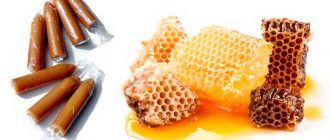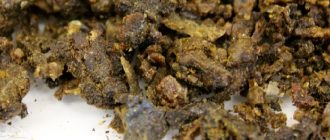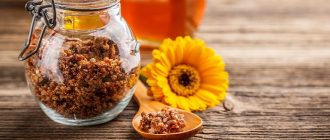Wormwood is used for prostatitis due to a wide range of beneficial substances that have a pronounced antitumor, anti-inflammatory and antibacterial effect. However, its use may be contraindicated and the approval of your physician should be sought for use. There are many ways to use it - from decoctions and teas with the addition of other medicinal plants to microenemas.
Useful properties of wormwood
In folk medicine, it is wormwood that is used. It is mistakenly considered to be a weed, but this is not so. Due to its numerous beneficial properties, it is a medicinal plant and is effective in the treatment of many diseases.
The medicinal properties of wormwood are due to the content of useful substances:
- azulenes;
- glycosides;
- saponins;
- flavonoids;
- resins and tannins;
- ascorbic and succinic acids;
- potassium salts;
- carotene;
- essential oil.
Thanks to these substances, the plant has a whole range of positive effects. Wormwood for prostate adenoma helps relieve swelling, has an anti-inflammatory and antimicrobial effect. Also, if you drink wormwood, the pain from prostatitis will go away due to easier urination. In addition, the plant saturates the body with useful microelements, which affects the overall tone and functioning of other organs and systems.
Contraindications
Wormwood has contraindications because it is a poisonous plant. Its use is prohibited for a long time. In addition, use by people with diseases of the gastrointestinal tract is contraindicated, especially with ulcers and increased secretion of gastric juice. Long-term use or high concentrations of infusions may cause convulsions, dizziness, loss of consciousness and hallucinations.
Treatment of prostatitis at home with folk remedies, including wormwood, can only be done after consulting a doctor. It is necessary to discuss the method of administration, duration of the course and obtain approval.
The process of harvesting wormwood
Only plants away from roads and industries are suitable for harvesting. The highest concentration of nutrients before flowering, during the budding period, is the end of May - beginning of June. In folk medicine, basal leaves and inflorescences are used before flowering or at its beginning, when the flowers are still yellow. When flowering comes to an end, they turn brown; during this period, the plant loses some of its beneficial properties.
Drying is carried out in a shaded, ventilated place. Plants are laid in a layer of no more than 5 cm and mixed frequently. It is advisable to store the resulting raw materials in closed glass containers or fabric bags in a dark, dry place.
Treatment of prostatitis and prostate adenoma with wormwood is best done by purchasing ready-made raw materials at any pharmacy. It is collected from environmentally friendly places and properly dried, which guarantees maximum benefits from use.
Recipes with wormwood
You can use the plant in several ways, depending on convenience and personal preference:
- in the form of an infusion;
- as dry powder;
- instead of tea;
- as a decoction for microenemas.
Tincture of bitter wormwood
The easiest way to prepare a one-component infusion is:
- Take 100 g of dry crushed wormwood.
- Pour in 500 ml of vodka.
- Let it brew for 2 weeks in a dark place.
- Pass the tincture through cheesecloth and discard any sediment.
- Take 1 tbsp. l. 3 times a day before meals for 2 weeks.
- For easier administration, you can dilute a portion of the medicine in 100 ml of boiled water.
If desired, you can add a few tablespoons of honey, pine buds, yarrow, chamomile and other medicinal herbs to the infusion.
Dry wormwood powder
According to various statements, the powder is the most effective because it preserves and transmits all useful substances. To use it, you only need a dried plant and a coffee grinder. It is used no more than 5 times a day, 1 pinch, the course of treatment should not exceed 7 days. After use, it is advisable to rinse the mouth with water.
Herbal tea from wormwood
It can be prepared either in its pure form or with the addition of other medicinal herbs and tea itself. One-component tea is essentially a decoction and is prepared as follows:
- Take 1 tsp. dry crushed wormwood.
- Pour in 200-250 ml of hot water (not boiling water).
- Let it brew in a thermos or closed mug for 10 minutes.
- Drink no more than 3 cups per day for 10 days.
The recipe can be improved by adding ½ tsp. daisies.
The herbal tea itself will be quite bitter, so it is recommended to add 1-2 tsp. honey, it will improve the medicinal and taste properties of the drink. You can also prepare it together with regular tea, in a 1 to 1 ratio.
Enemas with wormwood
A microenema from wormwood for prostatitis will allow you to most effectively deliver beneficial substances to the affected organ and surrounding tissues. To do this, follow the recipe:
- Take 2 tbsp. l. dried wormwood.
- Pour in 250 ml of hot water.
- Place the resulting mixture in a water bath for 15 minutes.
- After this, filter through cheesecloth and let cool to a temperature slightly above the human body (it will feel like pleasant warmth).
- Pour the mixture into a medical bulb and douche. Before this, it is advisable to perform a cleansing enema.
- Keep the composition in yourself for 15 minutes.
- Carry out therapy every other day for 2 weeks. After this, treatment should be stopped for at least a month.
If problems with the gastrointestinal tract occur, therapy should be stopped immediately. Due to its antibacterial effect, the plant can inhibit beneficial intestinal microflora.



